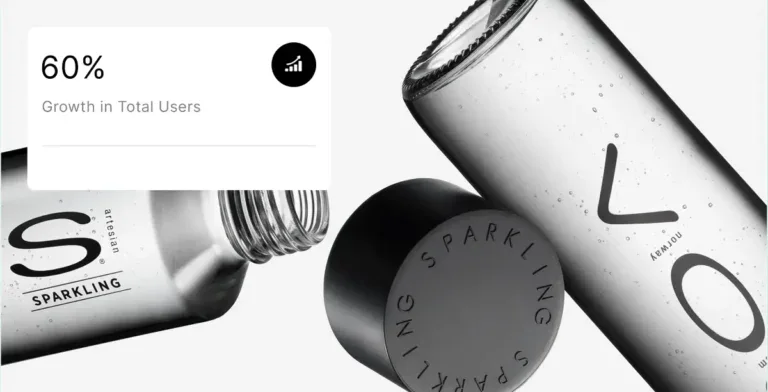Are you trying to update your brand but don’t know how or where to start?
Don’t worry – with this rebranding checklist article, you’ll learn about all the most important steps you should take this year.

Did you know that 60% of companies reported that being consistent in branding added 20% more growth to their brand?
This year, it’s crucial to have everything related to your brand updated.
That being said, many people find investing in a complete rebranding daunting, especially if they don’t know what they should be doing. This is exactly why we made this rebranding checklist.
With it, you can make sure that all of the important points of every good brand are taken care of.
From the obvious ones, such as updating your logo, to the easy-to-miss ones, such as employee training.
This article will guide you through them all and will make sure that you know exactly what your brand needs to look its best.
But before we go through the checklist, let’s answer the big elephant in the room. Does your brand really need rebranding? Or does it just need a new brand strategy
Looking to completely rebrand your business but don’t know where to start? Let us help.
Rebranding Checklist: Do You Even Need a Rebrand?
Your company might need a rebrand for many reasons. These can include outdated visuals or a major change in products.
But how do you determine it?
Let’s go through some of the most important reasons to rebrand in 2025.
Your Products or Services Changed: If you’ve recently changed your products or services, your brand needs to reflect that. The last thing you want to do is confuse potential customers by having outdated copy about a product or service you don’t sell anymore. This goes for everything related to your brand, not just your website.
- Out of Date Branding: Have you not retouched or thought about updating your brand in over 10 years? If so, chances are that your brand might be a bit stale for 2025. When thinking about rebranding, you don’t have to think of it as a complete redesign of everything. Rebranding can also be about updating your current brand to a more modern look.
- Your Brand Looks Too Similar to Others: With millions of brands available, it’s common for one to look quite like yours. This is a completely valid reason to rebrand since you want your brand to stand out from every other.
If any of these are happening to your brand, then it’s time to start considering a rebrand.
Below we will go over our updated rebranding checklist so you know what to look out for and what to focus on first.
1. Audit Your Brand
This should be the first step on any rebranding checklist. You can’t strategize and change anything if you don’t know what exactly needs fixing in the first place.
When going for a brand audit, there are several things you should take note of. The fonts, visual assets, style guide, and color palette should be the first things you check.
By knowing all of these, you are able to get a rough idea of how people view your brand. Remember that you want to be as unbiased as possible if you want to take full advantage of an audit.
Compare your brand to your main competitors and ask yourself these questions:
What visual elements do they use on their website?
- How much do they focus on social media?
- How consistent is their brand across all of their marketing channels?
These questions will help you gauge how your brand is doing in comparison to other brands selling similar products or services.
2. What’s Your Brand Identity?
The next step in every good rebranding checklist is checking your brand identity.
Without a clear and concise brand identity, it is difficult for visitors to remember or connect with your company at all.
Most brands should have this set in stone, but in case you’re doing a complete rebrand, let’s go over what you need for your brand identity:
Your mission and what your brand stands for.
- A slogan unique to your brand.
- Your brand name with its reason if you’re changing it.
- Your brand values.
With these four points in mind, you can create a brand identity that helps you cover the rest of this rebranding checklist.
3. Who Are You Reaching?
You’ve established your brand identity, but who exactly are you trying to reach?
If you lack a clear audience and customer persona, it’s tough to connect with potential customers.
Start by defining your customer persona with simple attributes such as:
Gender
- Age
- Hobbies
- Occupation
- Address
- Socioeconomic status
There’s even more you can do if you want to pinpoint a customer persona, but for most brands, this is a good starting point.
4. Do You Know Your Brand Guidelines?
Does your brand have any sort of guidelines when it comes to talking and using company assets such as logos?
If not, then it’s time to understand its importance.
A brand guideline helps align and ensure that the content being written and said on all your marketing channels is consistent. The last thing you want is for visitors to get confused when they notice your website content is not like your Instagram posts at all.
Creating a brand guideline can take quite a bit of time, so make sure you set aside enough time to do it before moving on.
5. Do You Have a Style Guide?
Similar to a brand guideline and sometimes confused with it, a style guide helps designers understand several design details that make a big difference if done incorrectly.
Explain everything about your visual assets here. Include hex codes for your exact colors and describe how your brand uses images and illustrations.
While it might seem excessive, having a style guide will ensure that your brand is as consistent as it can be across all channels.
Having both a brand and style guide is vital and necessary when rebranding your company.
6. Are Your Visual Elements Updated?
So far we’ve gone through the building blocks of this rebranding checklist.
Now we can start working on the big changes that your customers will actually notice. The biggest component of your brand that a customer will see is your visual assets.
Of course, these assets aren’t just there to look pretty, and that’s it. You want these assets to help create a connection with potential customers. Don’t create a quick logo and call it a day.
Make sure your logo has meaning and thought put into it.

These are the main visual assets you should think about, such as:
Fonts: Make sure you’re using a font that is legible and aligns with your brand. If it’s hard to read, then people won’t bother.
- Brand Colors: Knowing exactly what colors your brand should use is important. Colors can evoke certain emotions in people and can be a deciding factor in whether they buy something from you. You can learn more about the psychology of colors HERE.
- Logo: This is your main visual asset and should be the one you put the most time into. Make sure your logo represents your brand in a quick and easy-to-understand way. Make it memorable but not confusing.
Make sure you spend a good amount of time with your visual assets. They will be used everywhere, so they should look their best.
6. Do You Have Branding Consistency?
You can have all the previous points on the rebranding checklist done, but if you don’t use them properly and consistently, then it’s all for nothing.
Brand consistency is all about having the same tone of voice and design everywhere.
People coming from your social media accounts should feel right at home on your website. It’s a lot easier for people to remember a brand that is consistent with how they interact with them.
7. Are Your Marketing Channels Updated?
When you start rebranding your company, it can be easy to focus solely on your website and forget about all the other areas where your brand is visible.
Make sure all your main marketing channels get all the rebranding improvements that your website gets.
For most brands, these marketing channels are their social media profiles and their email.
To create memorable moments with potential customers, consistency is essential. Check that all channels are updated and contain the correct content.
8. Ensure Old Brand Assets are Removed
This might be obvious but it’s a rebranding checklist point that is very easy to overlook.
If you save all of your brand information and assets in cloud storage, make sure that you move all the old assets and documents to a different folder.
If you want to be extra safe, remove access to those old files so no employee can use them by mistake.
Then replace all the old documents with the new ones by adding them in the same folder the old ones were in.
This ensures that no mistakes or misuse of old assets is ever done.
Does your company need a long overdue rebrand? We can help.
9. Did You Train Your Employees?
Training your employees on the brand guidelines and style guide is essential. This is closely linked to our rebranding checklist.
By explaining to them what they can and cannot do, you make sure that you don’t have to oversee anything in search of inconsistencies.
Make sure your guideline doesn’t go to waste by showing how to use it and when it should be checked.
The reality is that most companies don’t really do any sort of training because they expect their employees to instantly use the guidelines.
Long-term employees often take time to adapt to new guidelines without proper training.
All communication coming from your company should comply with the latest guidelines. It doesn’t matter if it’s a reply on X (formerly known as Twitter) or a product description on your website.
10. Smooth Logistics and Proper Legalities
The last point on this rebranding checklist is very important. It’s about managing the logistics and legalities of the rebrand.
While a rebrand isn’t something that happens in one day, you should still communicate all the changes to your employees. This ensures that the rebranding process doesn’t come as a surprise to anyone.
This also lets them make the appropriate changes, such as email signatures and company profiles, if needed.
We highly recommend you set some deadlines for your rebranding process so it doesn’t take longer than needed. Make sure you keep your whole team in the know about the process and deadlines so they can plan accordingly and help on their end.
When it comes to the legal part of any rebranding process, you should learn how to get a trademark and copyrights where needed. The last thing you want to see is some random person taking all the credit for your hard work.
There is a lot of paperwork to do when you’re rebranding, so make sure you have everything organized and filed so it’s easy to access and show.
Some brands prefer to hire a lawyer to double-check all the paperwork needed. We recommend doing this if you’re not sure about all the paperwork needed for your rebranding process.
If you’re comfortable doing it all yourself and don’t feel like you’ll miss any important paperwork, then a lawyer might be unnecessary.
With all these points from this rebranding checklist done, you can rest assured that your rebranding will be successful.
Get a Complete Rebrand With Blacksmith
Going through all that checklist might make rebranding seem daunting to do. Don’t worry, with Blacksmith you’ll get a smooth transition from your old brand to your completely revamped brand look.
With a branding agency on your side, there will be no need to stress and organize everything yourself; let us do all of the hard rebranding work while you focus on the other aspects of your business.
Still unsure if your brand needs a rebrand? Click here to schedule a call with us so we can audit your brand and tell you if your brand needs a facelift or not.









